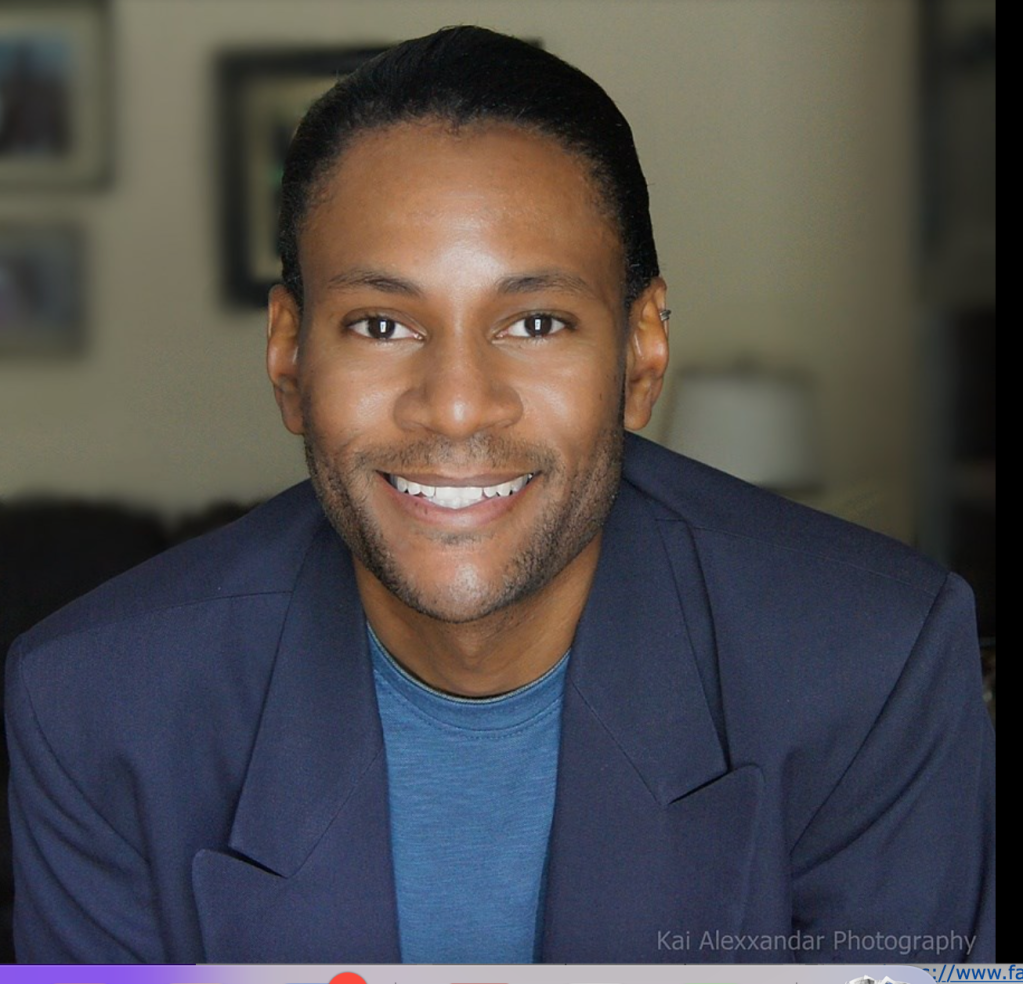Florida
Environmentalists: Florida panther will hurtle toward extinction if Town of Big Cypress is allowed

Billions of taxpayer dollars are being spent to fix damage done to the Florida Everglades before it was understood what draining wetlands, altering the flow of the River of Grass, and destroying habitats would do to South Florida’s environment.
Yet Collier County commissioners this summer signed off on a new master-planned community totaling thousands of acres and targeted to be built within the wetlands of the western Everglades ecosystem.
The Town of Big Cypress includes three, city-sized villages — Rivergrass, Longwater, and Bellmar. In total, the development will result in 8,400 residences, up to 11,000 new residents, and nearly 1.6 million square feet of commercial space for hospitals and schools and movie theaters.
Collier Enterprises
/
WGCU
Huge environmental restoration projects to repair the Everglades are underway surrounding the proposed site, about four miles east of Naples.
The U.S. Fish and Wildlife Service, the agency that implements the Endangered Species Act, signed-off on the Big Cypress development while admitting more Florida panthers will die each year because of its existence.
That’s because the Bellmar Village portion is to be built within one mile of the Florida Panther National Wildlife Refuge, a 26,400-acre unfenced habitat for the endangered animal established more than 30 years ago.
The roads near Bellmar Village, such as Golden Gate Boulevard and Oil Well Road, are already deadly hotspots for panther-vehicle collisions.
Panther-vehicle mortality, a leading cause of documented panther deaths, will increase and this could lead to extinction of the Florida panther.
Conservancy of Southwest Florida
At least 13 of the highly endangered panthers have been hit and killed by vehicles in South Florida this year. Environmentalists say residents of Bellmar will add 45,000 vehicle trips daily on roads near the panther refuge.
“The regulation has been completely eroded to the developers favor, and the panther is going to pay the price,” said Patty Whitehead of the Responsible Growth Management Coalition of Southwest Florida. “There is no mechanism now to protect panthers. There isn’t. It’s gone in Florida. It’s gone.”
Whitehead is one of several dozen opponents who joined some of the state’s top environmental nonprofits late last week to protest at the Naples Branch of the Collier County Library.
That’s where the Florida Department of Environmental Protection was having a final public presentation before deciding on whether to grant what amounts to penultimate permits involving permission to destroy natural wetlands for Bellmar Village.
The protestors gathered in an alcove outside the library before the FDEP’s event started. Some were carrying photos of panther carcasses crumpled on the side of a roadway after a vehicle strike. Other signs had the word “Bellmar” inside a red circle with a red line across it.
Elise Bennet, the Center for Biological Diversity’s Florida director and senior attorney, said Florida Panthers need every last inch of habitat remaining if they are to survive and recover.
“And we know this permit is only the tip of the spike leading the way to drive even more urban development into our panthers vital habitat, committing the species down the road to extinction,” she said. “This is unacceptable.”
Opponents of the Town of Big Cypress, and Bellmar Village in particular, say it will doom the Florida panther population by bring more people into the animals’ domain, and create more traffic to hit and kill the panthers. The big cat population may only number about 200 today.
Inside a meeting room in the library, the state environmental protection agency had tables set up with posters filled with information about the Town of Big Cypress and the regulatory processes involved.
The protesters mingled with no less than eight FDEP representatives asking questions on how such a big community could get permission to destroy so many acreages of protected wetlands and swamps, and convince environmental regulators to build so close to the key habitat of a highly endangered species.
The FDEP was going to close the public comment period last week before making a decision, but with so much public interest remaining in the Big Cypress development, the agency said at the meeting, the deadline was extended to give everyone extra time to file their opinions online.
While Collier County and the federal fish and wildlife service has signed off on the initial development plans, several state and federal agencies, including the FDEP, have not.
Earthjustice, on behalf of the Center for Biological Diversity and Sierra Club, has filed a motion to block the issuance of the remaining permits for Bellmar Village, arguing it would result in significant loss of panther habitat and harm to the species.
Collier Enterprises, a Naples-based real estate investment and development firm has had a reputation earned by a long history of environmental stewardship. The company preserved large areas and open spaces and focused on sustainability in planning new communities and other projects.

Florida Fish and Wildlife Conservation Commission
/
WGCU
Collier donated more than 260,000 acres of Southwest Florida wildlands contributing to the creation of several wildlife refuges and sanctuaries, often in tandem with Defenders of Wildlife, Florida Wildlife Federation, and the Florida Panther Protection Program.
The latter involves more than 195,000 acres in Collier County preserved to protect and manage the Florida panther and other endangered species in Southwest Florida.
Collier Enterprises was acquired by the Punta Gorda conglomerate,Tarpon Blue Family of Companies, in early October.
On the promotional website for the Town of Big Cypress, the Punta Gorda executives tout the thousands of job opportunities the development is going to create, as well as 880 affordable housing units — “an unprecedented commitment being made in cooperation with Collier County to ensure a variety of attainable housing for all.”
They say they will be making several environmental improvements that will be a lasting part of the development.
“The plan includes reestablishing historic waterways and restoring critical wildlife corridors. More than 12,000 acres of land are set to be preserved, maintained in perpetuity, and this preserved land will be three times the size of the development area.”
The developers say they are preserving 12,337 acres, including a key corridor for the Florida panther that connects with more conservation land to the north and with the Florida Panther National Wildlife Refuge to the south — all at no cost to Collier County taxpayers.
The Tarpon Blue group added: “Our planning team will continue to study wildlife and ecosystem issues, working with Florida and national panther experts, as well as experts in conservation biology, water quality, and other disciplines.”
Environmental reporting for WGCU is funded in part by VoLo Foundation, a non-profit with a mission to accelerate change and global impact by supporting science-based climate solutions, enhancing education, and improving health.
Sign up for WGCU’s monthly environmental newsletter, the Green Flash, today.
WGCU is your trusted source for news and information in Southwest Florida. We are a nonprofit public service, and your support is more critical than ever. Keep public media strong and donate now. Thank you.

Florida
South Florida Weather for Tuesday 11/26/2024 12PM

Watch CBS News
Be the first to know
Get browser notifications for breaking news, live events, and exclusive reporting.
Florida
How Florida football and Ron Zook spoiled the Bobby Bowden Field dedication 20 years ago
Swampcast talks Florida football hosting No. 9 Ole Miss at The Swamp
The Sun’s Kevin Brockway and David Whitley break down the Florida football-Ole Miss matchup with Sam Hutchens of the Jackson Clarion-Ledger
More than 20 years ago, on Nov. 20, 2004, Florida football rolled into Tallahassee with a lame duck coach and weary team, eager to avenge a loss to rival Florida State from the season before.
What happened on the night that Florida State dedicated the field legendary coach Bobby Bowden inside of Doak Campbell Stadium was surprising to all except those who wore Florida Gators uniforms that day.
Florida coach Ron Zook had been fired close to two months earlier following a 38-31 loss to Mississippi State, but stayed to coach the team the remainder of the 2004 season while former athletic director Jeremy Foley pursued potential candidates.
Zook wasn’t going to coach the bowl game, so this was going to be his last time patrolling the sidelines for UF.
“It meant a lot to us,” former Florida cornerback Dee Webb said. “We wanted to send him out on a winning note.”
Florida jumped to an early 10-point lead and held on to upset the No. 10 Seminoles 20-13, spoiling Bowden’s honorary night. Florida fans still delight in calling Doak Campbell Stadium “Ron Zook Field.”
Players carried Zook off the field on their shoulders following the game.
“It’s something you appreciate,” said Zook, who remains in coaching as a special teams analyst at Maryland. “But it was just the players and the coaching staff and everyone putting in the hard work. I just happened to be the guy who got picked up.”
A rocky third season for Florida football coach Ron Zook
Zook faced a monumental task replacing icon Florida football coach Steve Spurrier, who led UF to six SEC titles and the school’s first national title in 1996. Foley hired him for his recruiting acumen even though he entered the job with no college football head coaching experience.
After going 8-5 in 2002 and 2003, Zook entered 2004 squarely on the hot seat. When Florida dropped to 4-3 following a 38-31 upset loss at Mississippi State, Foley fired Zook, who agreed to stay on and coach the team rather than have UF turn the program over to an interim coach on his staff.
“It wasn’t normal from the morning after the Mississippi State game,” Zook said. “We had been a young team and we hadn’t always won, but what helped them as freshman and sophomores is that they were able to grow up and learn to deal with adversity. I think that’s a tribute to the guys.”
Indeed, after Florida lost 31-24 to rival Georgia in Jacksonville, the Gators won two straight, beating Vanderbilt 34-17 and routing South Carolina 48-14 at The Swamp before its showdown with the Seminoles.
Florida looked to avenge a 38-34 loss to FSU at The Swamp the season before, a game decided on a handful of controversial calls by officials.
“We felt like we could play with anybody,” Webb said. “Our freshman class, go back to our first year there (in 2003), we were the only team that beat LSU that year and they went on to win a national championship, probably 40 percent of them played as true freshman. It was all about being consistent.”
How Florida football upset FSU
Former Florida running Ciatrick Fason, who rushed for 103 yards and a touchdown in the win, said players didn’t know they were honoring the field for Bowden until they got to the game. Bowden, then 75, was still coaching the Seminoles in his 28th season after leading FSU to national titles in 1993 and 1999.
“I had a pretty good relationship with Coach Bowden,” Zook said. “It was Florida, Florida State so it was always a rivalry game. The crowd was pretty hostile.”
Still, choosing to honor Bowden for the Florida-FSU game didn’t sit well with Fason and the rest of his teammates.
“We’re still the University of Florida,” Fason said. “If they were going to try a team it should have been against one of them ACC schools or something, but not us. So that was our motivation, hey, we’re fixing to spoil the moment.”
Fason recalled knocking an FSU defensive back out of the game as the ‘Noles’ defender tried tackling him early in the game after he caught a screen pass. Still, the wear and tear of leading the SEC in rushing (1,267 yards on 222 carries) led to a foot injury that slowed Fason in the first half. Fason got a shot from a trainer pregame.
“Once that medicine kicked in, that second half, man, I felt like my normal self,” Fason said. “One thing I know about myself is, I run hard. Because I hear the defenders tell me how hard I run, and I heard Florida State defenders saying, he ain’t slowing down. That kept motivating me.”
Florida built a 10-3 lead at halftime as its defense shut down the Seminoles and strong-armed quarterback Chris Rix in the first half. Webb recalled going across the field to make one of his two pass breakups in the game.
“That was one of the games where I just had a knack for the ball,” Webb said.
Fason rushed for an 8-yard touchdown to put Florida up 20-10 with 4:59 remaining in the fourth quarter.
As a Jacksonville native, Fason said he grew up dreaming of scoring in the Florida-FSU game.
“No matter what team I was playing for I wanted to score a game-winning touchdown in that game,” Fason said.
After an FSU field goal cut Florida’s lead to 20-13, Zook took a gamble, going for it on 4th-and-inches from his own 26-yard line with 2:35 to play. Chris Leak got the first down for Florida on a quarterback keeper, and UF was able to run enough clock out to preserve the win.
The aftermath of the Florida football upset of FSU
After getting carried off the field, Zook wanted to take a picture of the scoreboard.
“They turned the scoreboard off, like, a minute after the game,” Zook said. “I was with my brother trying to get a picture and we couldn’t get a picture of the final score”
Zook gave players the option to return with the team on the bus or stay in Tallahassee overnight if they had friends there. Webb chose to stay in Tallahassee with his close friend, former Florida safety Kyle Jackson.
“Kyle Jackson, he’s actually married to his high school girlfriend and she went to Florida State at the time,” Webb said. “Her friends and were cheerleaders so we partied with them.”
The players who chose to return on the bus were greeted by Florida fans in the predawn hours at The Swamp, who cheered at their arrival. A friend of Zook’s opened Ballyhoo’s, a restaurant in Gainesville, for a postgame celebration.
“Our guys were able to get some food and refreshments,” Zook said.
Charlie Strong served as the interim coach for Florida at the Peach Bowl in Atlanta, where the Gators lost 27-10 to Miami. Foley hired Urban Meyer from Utah, who led Florida to national titles in 2006 and 2008.
Of the 22 starters on UF’s 2006 national team, 18 were players that Zook recruited.
“Coach Zook, he didn’t get a fair shot,” said Webb, who played under Meyer in 2005 before declaring for the NFL Draft. “Had he stayed, we would have gotten two (national titles).”
Zook was hired by Illinois in 2005, where he led the Illini to the Rose Bowl in 2007 but was fired after going 34-51 in seven seasons. Now 70, Zook is working at Maryland under head coach Mike Locksley, who was his running backs coach at UF in 2004.
“It wasn’t the smoothest three years but I still think that coaching at Florida is the best job in America,” Zook said. “I learned a lot about life, how to deal with people.”
Webb played two years in the NFL with the Jacksonville Jaguars and remained in pro football in the CFL and arena leagues until 2015. He’s still involved in football providing lessons for high school players in player development.
Fason played three seasons in the NFL with the Minnesota Vikings (2005-06) and Jaguars (2008). He’s remained in his native Jacksonville as the football coach at Fletcher High School, channeling the lessons he learned from Zook, Locksley and former UF offensive coordinator Larry Fedora.
“Those three guys were amazing to me and it definitely helped me in high school,” Fason said. “I learned how to recruit, to help get kids into college on the recruiting side …
“I still reach out to all three of them every once in a while, just to see how they’re doing, and you know to get an update on things or get coaching tips. I really appreciate those guys for the rest of my life.”
Kevin Brockway is The Gainesville Sun’s Florida beat writer. Contact him at kbrockway@gannett.com. Follow him on X @KevinBrockwayG1
Florida
Florida woman sentenced to 25 years in prison for shooting neighbor

A white Florida woman who fatally shot a Black neighbor through her front door during an ongoing dispute over the neighbor’s boisterous children was sentenced Monday to 25 years in prison for her manslaughter conviction.
Susan Lorincz, 60, was convicted in August of killing 35-year-old Ajike “A.J.” Owens by firing a single shot from her .380-caliber handgun in June 2023.
The shooting was the culmination of a long-running argument between the two neighbors over Owens’ children playing in a grassy area near both of their houses in Ocala, about 80 miles (130 kilometers) northwest of Orlando.
Prosecutors said Owens had come to Lorincz’s home after her children complained that she had thrown roller skates and an umbrella at them, which Lorincz denied. Trial testimony showed Owens, a mother of four young children, was pounding on Lorincz’s door and yelling, leading Lorincz to claim self-defense in shooting her neighbor.
Lorincz told detectives in a videotaped interview that she feared for her life. She also said she had been harassed for most of the three years she lived in the neighborhood.
“I thought I was in imminent danger,” she said.
Jurors did not agree with her self-defense claim.
Owens’ family pushed for the maximum prison sentence after Lorincz was convicted by an all-white jury.
“While the pain of losing Ajike, we are hopeful that justice will prevail and that the court will give Susan Lorincz the maximum penalty for her actions,” said Owens’ mother, Pamela Dias, in an email statement before Monday’s sentencing. “Ajike’s legacy will live on through her children, and we will continue to fight for justice.”
Lorincz’s attorney, Assistant Public Defender Amanda Sizemore, sought a more lenient sentence, an unspecified term below the 11.5 years in prison that is the lowest for her crime under state guidelines. Sizemore said in court documents that there are several reasons to justify a downward departure, including a mental disorder and claims that Owens was the aggressor and under “extreme duress” during the confrontation.
There were protests in the Black community in Ocala when prosecutors took weeks to charge Lorincz with manslaughter, a lesser count than second-degree murder, which carries a potential life prison sentence. Marion County, which includes Ocala, has a Black population of about 12%, according to census figures.
-

 Business1 week ago
Business1 week agoColumn: Molly White's message for journalists going freelance — be ready for the pitfalls
-

 Science7 days ago
Science7 days agoTrump nominates Dr. Oz to head Medicare and Medicaid and help take on 'illness industrial complex'
-

 Politics1 week ago
Politics1 week agoTrump taps FCC member Brendan Carr to lead agency: 'Warrior for Free Speech'
-
/cdn.vox-cdn.com/uploads/chorus_asset/file/25739950/247386_Elon_Musk_Open_AI_CVirginia.jpg)
/cdn.vox-cdn.com/uploads/chorus_asset/file/25739950/247386_Elon_Musk_Open_AI_CVirginia.jpg) Technology1 week ago
Technology1 week agoInside Elon Musk’s messy breakup with OpenAI
-

 Lifestyle1 week ago
Lifestyle1 week agoSome in the U.S. farm industry are alarmed by Trump's embrace of RFK Jr. and tariffs
-

 World1 week ago
World1 week agoProtesters in Slovakia rally against Robert Fico’s populist government
-

 Health3 days ago
Health3 days agoHoliday gatherings can lead to stress eating: Try these 5 tips to control it
-

 News1 week ago
News1 week agoThey disagree about a lot, but these singers figure out how to stay in harmony













